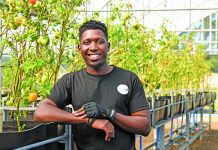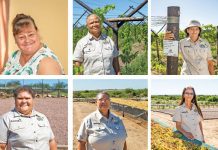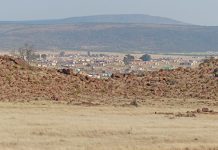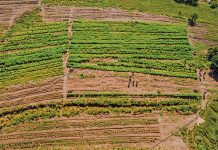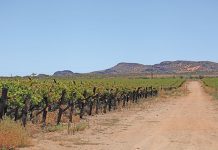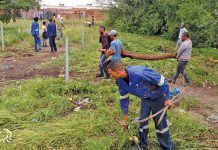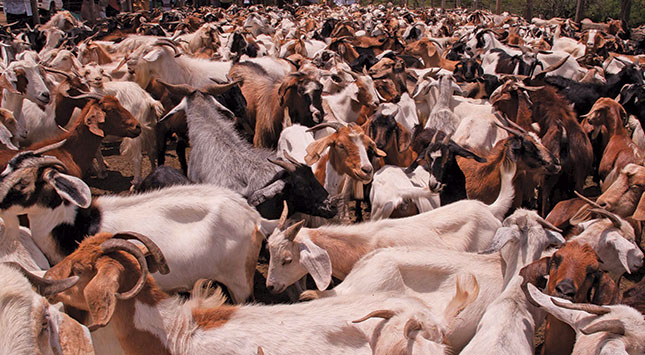This is the first in a series of five articles on habitat planning in which habitat designer and wildlife biologist Ben Breedlove explains how to create a fully functional and optimised habitat when farming on a fragment of land, thus getting the most out of animals and visitors. Roelof Bezuidenhout reports.
ATTEMPTING AN ECOTOURISM OR game ranching business with an incomplete habitat is like having a doctor perform a partial appendectomy. You can forget about hosting the “big hairies” until you’ve settled the “little hairies”.
You also have to understand your clients and their needs. So says wildlife biologist Ben Breedlove who specialises in creating functional habitats with a particular emphasis on the human-animal interface. The result, he explains, creates conditions wherein humans get exceptional opportunities to experience nature.
“First designing and then installing a high-functionality habitat has the potential to increase the habitat value and types of use within a given, and typically constrained area over that which would be expected with standard management procedures. We have to remember that today, whether your business is livestock, game or ecotourism you are at best operating on a fragment of land.
Many landowners with smaller unrehabilitated parcels will struggle to generate suitable conditions for wildlife unless they work to some plan.” He stresses that farming on and with fragments requires more to be produced from less. “In other words, the functional density of the fragment must be increased. The animals must find more reasons to want to be on your fragment than for running around in search of life requisites.
For that to happen, you must turn your fragment into a fully functional habitat, where wildlife can feed, breed, nest and rest,” says Breedlove.
Managing the alternative Big Five
“The ‘Big Five’ that you have to manage are the land, the animals on it, the visitors to it, their accommodation, and you the owner,” Breedlove says. “None of these, including yourself, are what you think they are. Each is more. The only one of the five resistant to change toward optimisation is the landowner.
“Although the land is not static, it is moribund. It is not dead, but has lost some of the diversity, functional value and features that it had and should have. Some 300 years of mismanagement has taken its toll.
The pre-European status of the land was different to what you imagine. Some benefits of far-reaching, highly effective, remedial actions can be in place and functioning well within a few years, others will take your remaining lifetime. You have a choice and a chance to begin the process of habitat optimisation and get to see many of the results of your handiwork
Creatures need cavities
Breedlove explains that land rehabilitation for habitat optimisation demands improvements in two primary areas. “Agricultural land use removes maturity and cavities from the landscape. As these are lost, animal species and numbers decline. Adding suitable cavities can have a significant and immediate impact on both occurrence and carrying capacity for many species.
One class of cavities occurs in woody material, the other in soil or rock. Some cavities can be readily seen, others can only be seen when you look closely for them.” The more visible cavities are associated with large animals – the first to be lost from a system and the last to return. The smaller cavities are located primarily in vegetation stems and in soil where smaller animals are active. These include insects, rodents, bats and lizards, and are very important for achieving habitat potential, yet are mostly unmanaged. It is this group of animals that has a primary role in pollination and seed dispersal. Their role is converting vegetative material into animal protein, themselves serving as food for many predators.
Breedlove explains that agricultural use of the landscape simplifies it. “Typically, a single crop is substituted for the many crops serving many different ends that occur under natural conditions. A pre-agricultural, pre-alteration landscape condition is typified by high species diversity, complex relationships among species, and a relatively high standing crop.” He calls this the mature condition. Re-establishing this level of maturity in habitat quality requires more than a carrying capacity study suited for determining whether there are too many or too few of certain larger animal species on the property.
Breedlove also emphasises that animals move around. “Give them a good reason and they will be on your property by choice and will occur where you want them. Fencing a property does not change the truth of this statement. Fencing is for the big hairies. It has no effect on 90% of the species that you rely on for either habitat quality or visitor experiences.”
Visitors are primates too
He sees visitors or ecotourists as animals too. “Worse, they’re primates with everything that implies. However, visitors also have money. Money flows in the opposite direction to the goods and services that visitors purchase and in proportion to the value that visitors place on their purchases.
The transaction process can’t be optimised unless the landowner understands the buyer’s interests, values those interests and puts visitor interests where they will trigger a purchase. This kind of habitat design is critical for the success of your enterprise.
“Accommodation is core habitat for visitors. Think of it as an attractant that people – urbanites, to be specific – can understand, although they may not have a background to understand many of the other things you offer. That’s why accommodation is the least recoverable area within which you can make mistakes and survive as a business. Visitors just won’t accept poor accommodation,” Breedlove stresses.
“Lastly there’s you, the landowner. You’re a primate too. The basic survival skills of primates are excellent. It’s certain aspects of their behaviour that make them vulnerable and convert them into a prey species, which you don’t want to become in your operation.
One unique behaviour that primates have is the ability to disbelieve. It is linked with and often called curiosity. It causes disassociation from reality, and that’s when negatives happen – such as business failure. You could consider a monkey’s consumption by a leopard as a business failure.
Self-management and behaviour management are the most critical elements in asset management. You can learn; your other assets cannot and never will learn.” Next week’s article will focus on preparing the land. Contact Ben Breedlove on (012) 343 5201 or e-mail [email protected]. |FW
More about Ben Breedlove
Ben Breedlove’s fresh approach and practical ideas will be invaluable to landowners who wish to add value to their properties – from big game ranchers and ecotourism enterprises to smallholdings and country bed and breakfast joints.
Breedlove owned and managed an environmental services firm for 27 years in the US where he served as the co-chair of the board of directors of the National Institute for Urban Wildlife. He has been working in South Africa since 1987 and has lived here permanently since 1996. He has degrees in wildlife, fisheries and public health and is completing a doctoral programme at the University of Pretoria. An early version application of the habitat design technique discussed here resulted in a NedBank/Mail & Guardian Green Trust Award for the Moreland Developments Zimbali Project.

